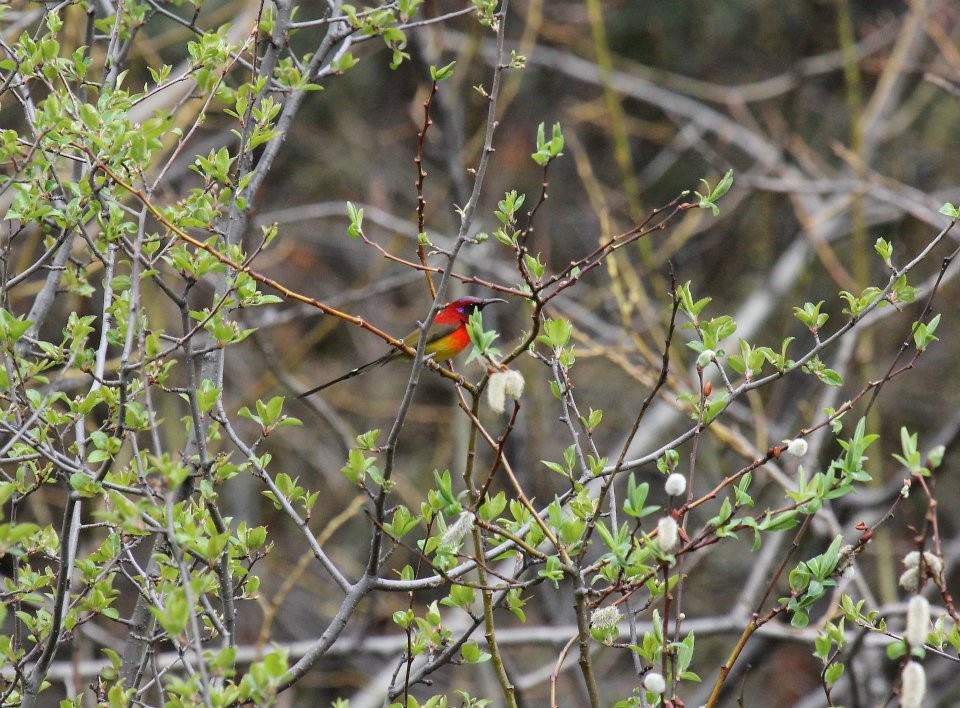Posted 01/14/15
In order to effectively conserve bird species, it is necessary to understand basic species-habitat requirements. In southwest China's Yunnan Province, habitat requirement of bird species that use Tibetan sacred forests of breeding habitat have been virtually unknown until Jodi Brandt and Eric Wood set out to study this.
In the northern region of Yunnan Province, for generations, Tibetan villagers have set aside patches of forest for spiritual proposes, also known as Tibetan sacred forests. During previous research Jodi and Eric discovered that sacred forests are keystone structures for conservation of forest bird in a landscape dominated by degraded pastureland.

They found more than 30 bird species heavily using sacred forests rather than pastureland. This result highlighted the importance of these forests for bird conservation. After this first study, the next step was to understand what characteristics of these forests make them so attractive for bird? Eric said: ‘In order to effectively manage and conserve bird species in the sacred forests, we need to understand the foundational habitat requirement of these birds. Once we know this, they we can begin to make recommendations for conservation applications. We now know that sacred forests support many bird species, the question that remain is why?’ For this, Jodi and Eric collected field data on habitat structure and composition and bird richness and abundance to construct bird-habitat relationship occupancy models. Some key structural variables that the pair sampled were cover of leaf litter, herbaceous materials, shrubs and trees. These variables are indicators of what species need for survivorship: nesting sites, food, refugee and protection. Once data was collected, and back in the comfort of Madison, Eric developed models to relate the explanatory variables with occupancy of over 30 bird species. With this model-selection approach, it was possible to select best-supported habitat-characteristics associated with a particular species occupancy.

In addition to the structural variables indicating diverse forested habitats, they found that high cover of leaf litter and shrubs are associated with occupancy of understory birds. While doing fieldwork, they observe that some understory specialist look for their food in the litter, where they can find insects underneath the leaves.

These result highlighted the importance of field observation. In cases where so little life history information is available, field work become a crucial experience to understand what the models are saying to us afterwards. While China continues to grow in population, there is an increase pressure in resources (e.g., wood, water, and land) in less populated regions, as is the case of Yunnan. In addition to learning more about birds that use Tibetan sacred forests as breeding habitat, the result of this research helps inform future forest management in a regional context.”
Story by Konrad Turlej
